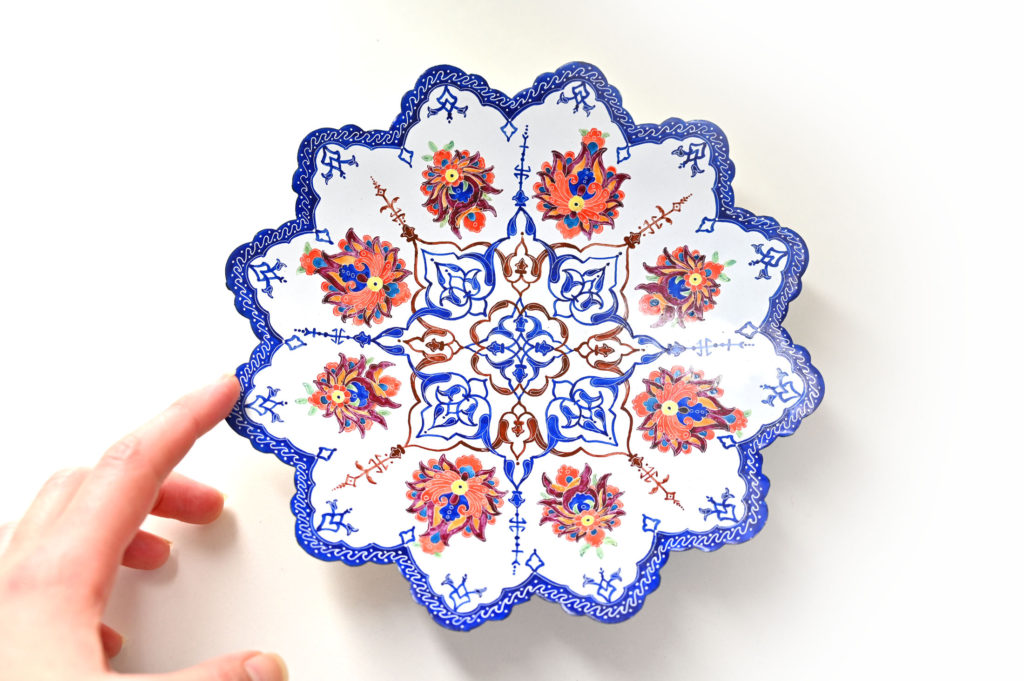
Minakari Art (Enamel)
Minakari, also known as Mina Kari, is a traditional Persian art form of enamel painting on metal objects. The word “minakari” is derived from the Persian word “Minoo,” meaning azure or heaven, referring to the brilliant and vibrant colours used in this art form.
Minakari dates back to ancient Persia and has a long history in Iranian craftsmanship. It involves intricate designs and patterns painted on metal surfaces, typically copper or silver, using various colours of enamel. The enamel is made by mixing powdered glass with metallic oxide and then applying it to the metal object. The piece is then fired in a kiln, which fuses the enamel to the metal and creates a glossy, durable finish.
The designs in Minakari usually feature intricate floral patterns, arabesques, birds, and other elements inspired by nature. The artists use fine brushes to paint the designs on the metal surface, paying great attention to detail. They apply different layers of enamel in different colours, firing each layer separately to achieve the desired effect. The process requires skill, precision, and a deep understanding of colour combinations.
Minakari objects can vary in size and form, ranging from jewellery pieces like earrings, necklaces, and bracelets to larger items such as plates, vases, and decorative tiles. These beautiful enamel artworks are highly valued for their intricate craftsmanship and vibrant colours. They are often used for decorative purposes, as gifts, and as symbols of wealth and luxury.
While Minakari has its roots in Persia, it has also been adopted and adapted by other cultures and regions, including India, Turkey, and Central Asia. Each region has its own variations and styles, but the fundamental techniques and principles of Minakari remain the same.
Today, Minakari continues to be practised by skilled artisans in Iran and other parts of the world. It represents the rich cultural heritage of Persia and serves as a testament to the creativity and artistic excellence of Iranian craftsmen.


